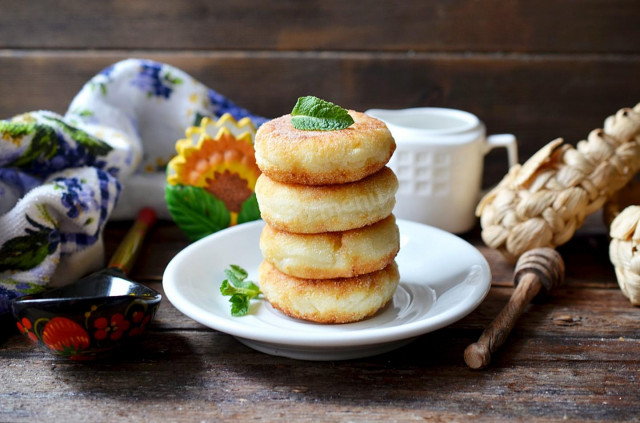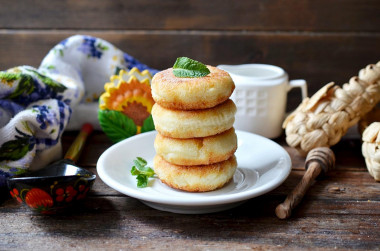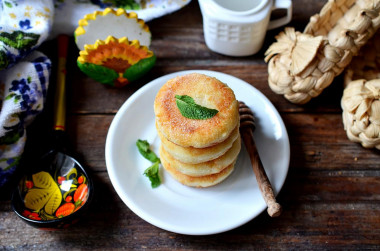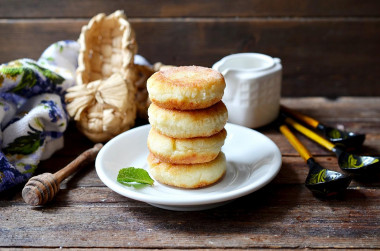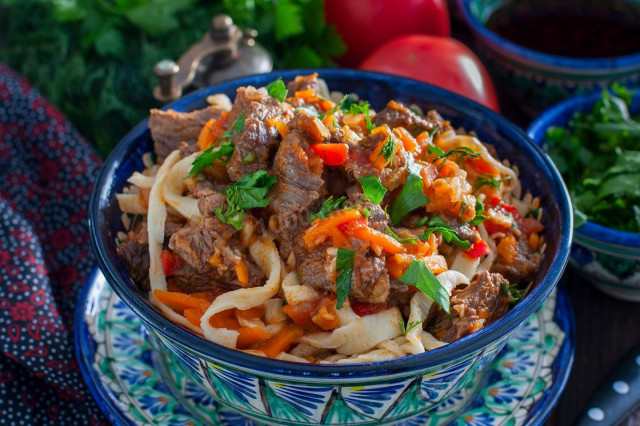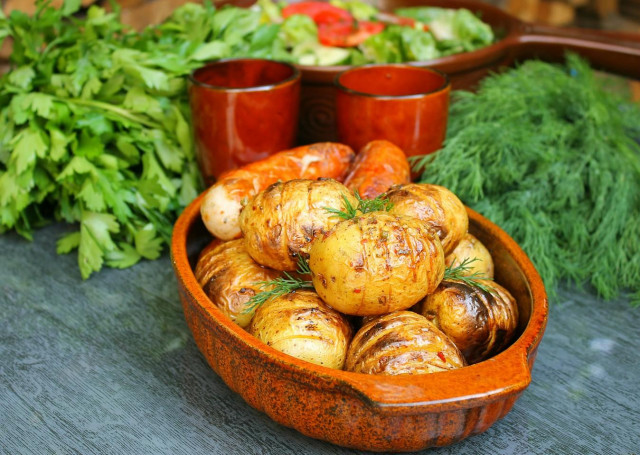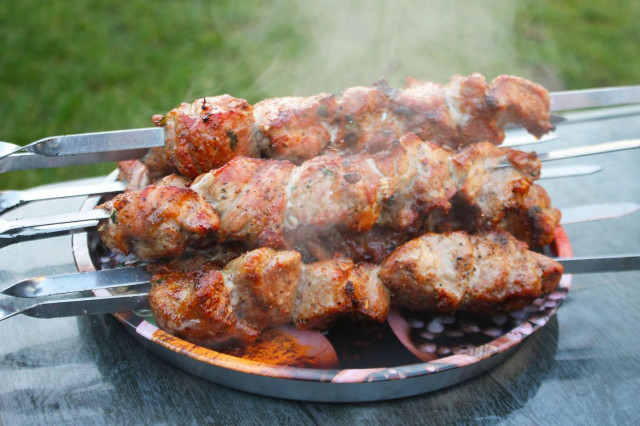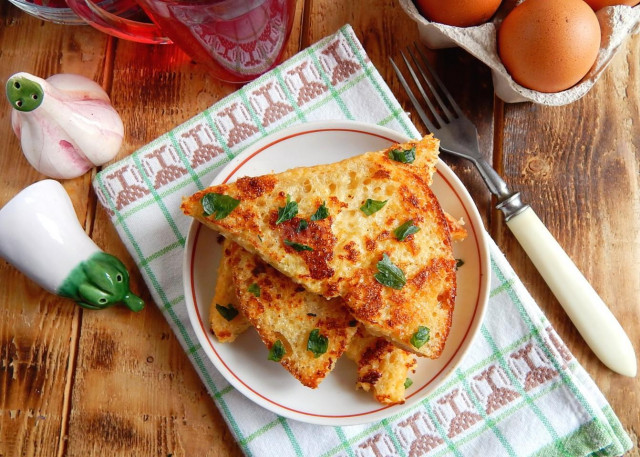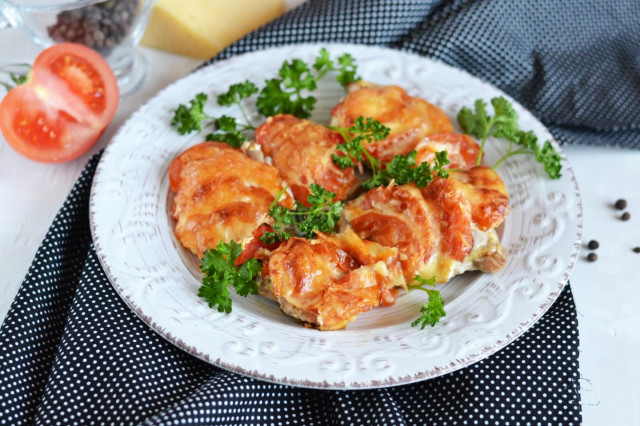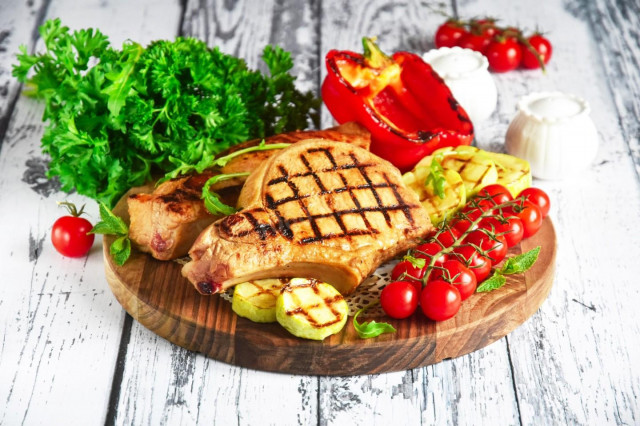Composition / ingredients
Step-by-step cooking
Step 1:
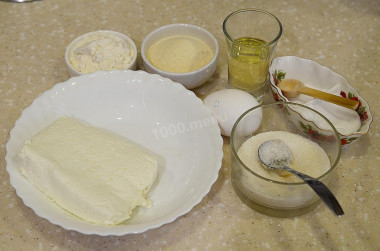
How to fry fluffy cheesecakes with semolina in a frying pan? Prepare the necessary products. I want to note that in baking it is important that all ingredients are of the same temperature. Take the cottage cheese and egg out of the refrigerator in advance. Take the cottage cheese fatter, - the cheesecakes will turn out more satisfying. The optimal fat content is 9-19%. Plain wheat flour, but do not take premium flour - such flour is snow-white, because it is bleached with chlorine. Optimally - flour of the first and second grade
Step 2:
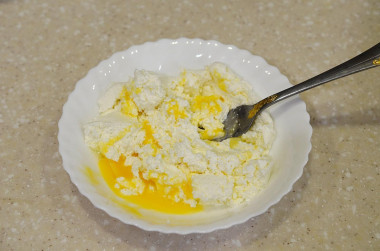
Look at the cottage cheese that you have in stock. It can be cottage cheese with krupmnkami - in this case, for a more uniform texture of cheesecakes, it will need to be wiped through a sieve. Beat the egg into the cottage cheese and mix well with a fork. For a pack of cottage cheese in 200 g. the smallest egg, for example C2, is perfect. If you have only large eggs available, add only the yolk.
Step 3:
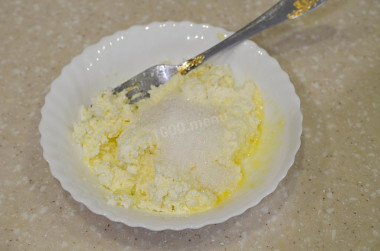
Add salt, add sugar. If you wish, it can be vanilla sugar, as well as for cinnamon lovers - a pinch of it will be very useful! Mix everything well!
Step 4:
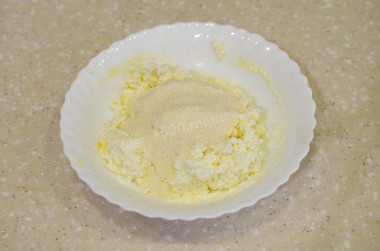
Add 2 tbsp.spoons of semolina. Stir and leave until the semolina swells for 10 minutes. The dough will become more dense, because semolina will absorb all the moisture.
Step 5:
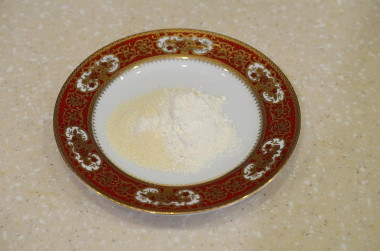
In a bowl, mix the remaining semolina and flour, mix.
Step 6:
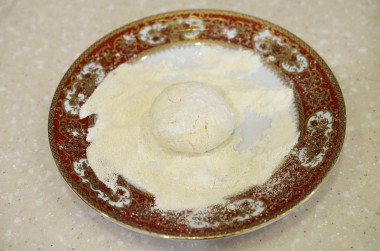
Form cheesecakes from the curd dough and roll them in a mixture of flour and semolina.
Step 7:
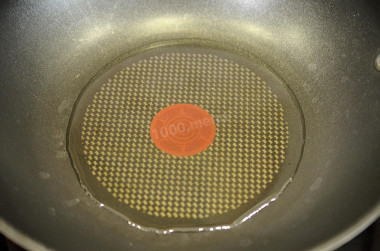
In a frying pan with a thick bottom and preferably with a non-stick coating, heat the vegetable oil well. The oil can be any: both olive and corn. But the main thing is that it should be refined - only such oil is suitable for frying and does not burn and does not smoke.
Step 8:
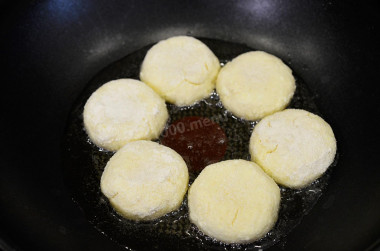
Put the cheesecakes in a frying pan and reduce the heat to slightly below average. Fry the cheesecakes for about 10 minutes on one side.
Step 9:
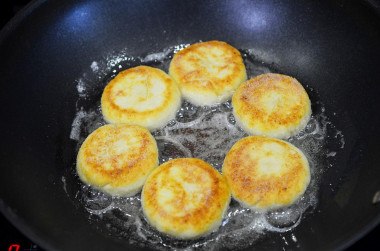
Then carefully turn over the cheesecakes with semolina, reduce the heat to a minimum and bring to readiness. You may have to cover the pan with a lid.
Step 10:
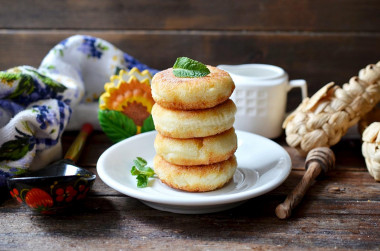
Serve cheesecakes with sour cream, jam, condensed milk or just for tea. Bon appetit!
Important! In order for the curd dough or filling to be successful, it is important to carefully consider the choice of cottage cheese. A low-quality product can spoil baking, as it directly affects the consistency, taste and final result. How to choose the right cottage cheese for dough or filling read in this article .
Be prepared for the fact that flour may need more or less than indicated in the recipe. Focus not on the amount of flour, but on the desired consistency of the dough. To avoid mistakes, read about flour and its properties!
Any oils are useful only until a certain temperature is reached - the point of smoking, at which the oil begins to burn and toxic substances, including carcinogens, are formed in it. How to determine the roasting temperature and choose the best oil for frying, and which is better not to use at all, read here .
Caloric content of the products possible in the composition of the dish
- Chicken egg - 157 kcal/100g
- Egg white - 45 kcal/100g
- Egg powder - 542 kcal/100g
- Egg yolk - 352 kcal/100g
- Ostrich egg - 118 kcal/100g
- Semolina - 340 kcal/100g
- Cottage cheese of 40% fat content - 466 kcal/100g
- Cottage cheese of 20% fat content - 233 kcal/100g
- Cottage cheese of 18% fat content - 226 kcal/100g
- Cottage cheese of 10% fat content - 156 kcal/100g
- Low-fat cottage cheese - 75 kcal/100g
- Cottage cheese with sour cream - 260 kcal/100g
- Fruit cottage cheese - 147 kcal/100g
- Soft dietary cottage cheese - 170 kcal/100g
- Vitalinia cottage cheese - 64 kcal/100g
- Cottage cheese "morning" ( "danone") without sugar - 91 kcal/100g
- Cottage cheese - 156 kcal/100g
- Whole durum wheat flour fortified - 333 kcal/100g
- Whole durum wheat flour, universal - 364 kcal/100g
- Flour krupchatka - 348 kcal/100g
- Flour - 325 kcal/100g
- Granulated sugar - 398 kcal/100g
- Sugar - 398 kcal/100g
- Vegetable oil - 873 kcal/100g
- Salt - 0 kcal/100g

